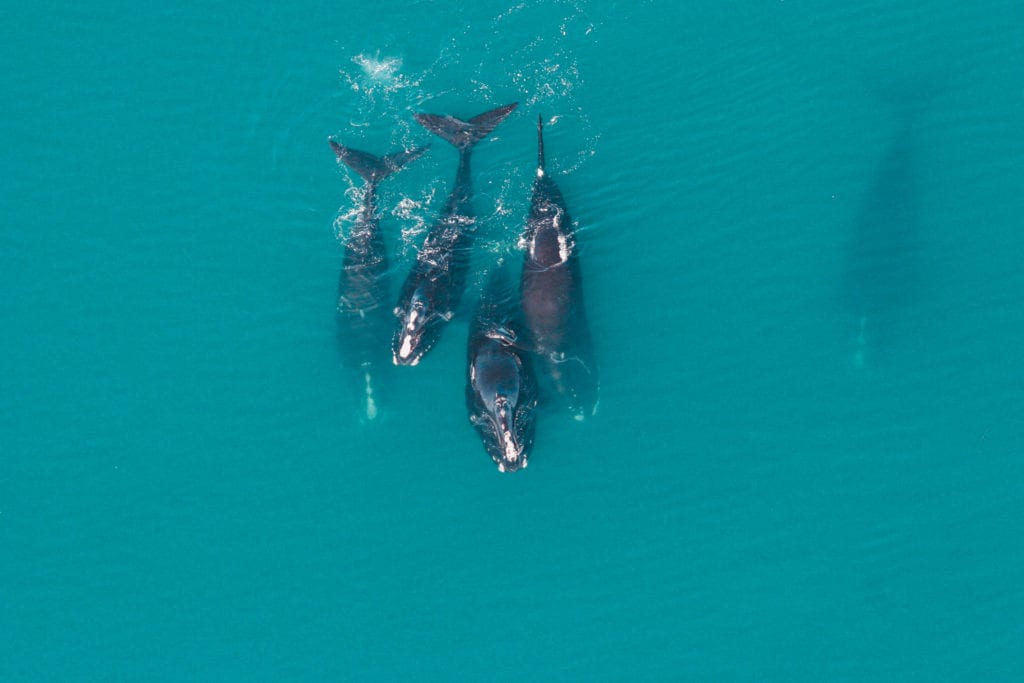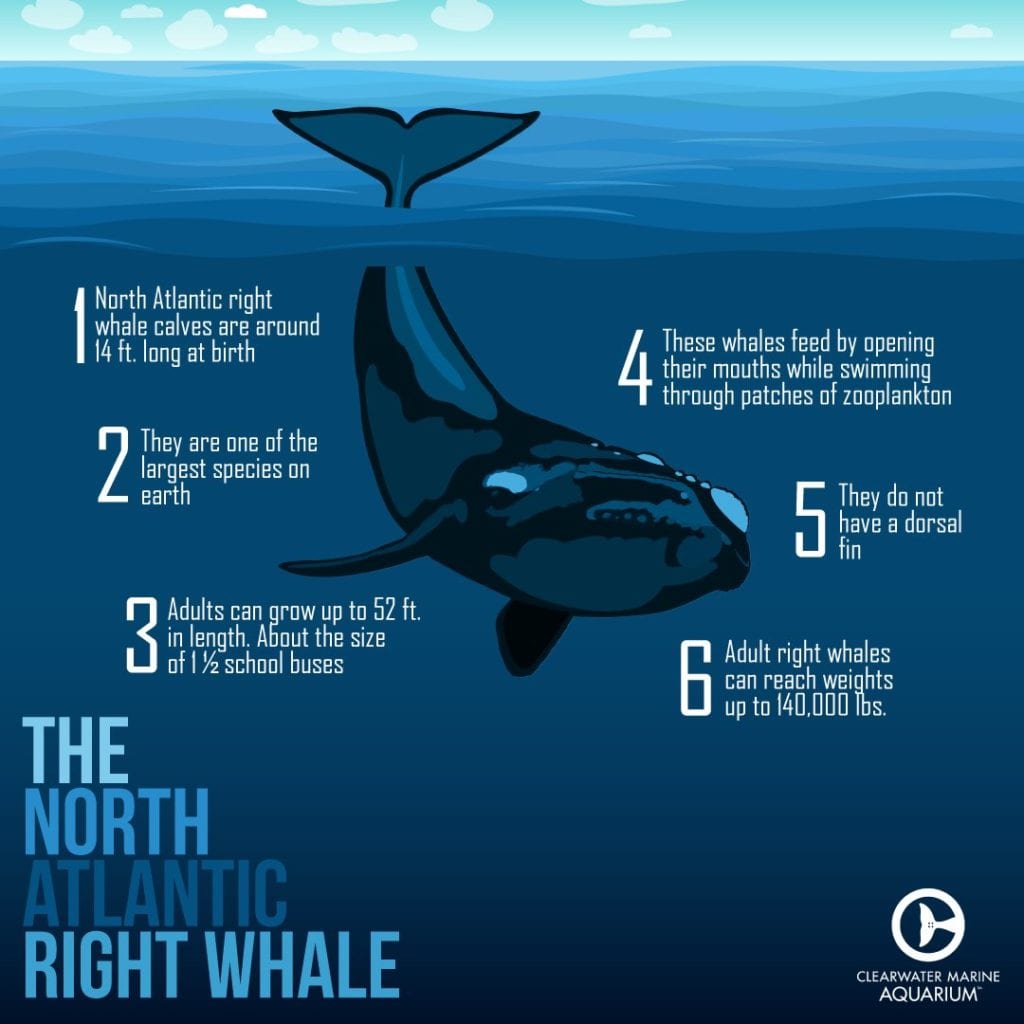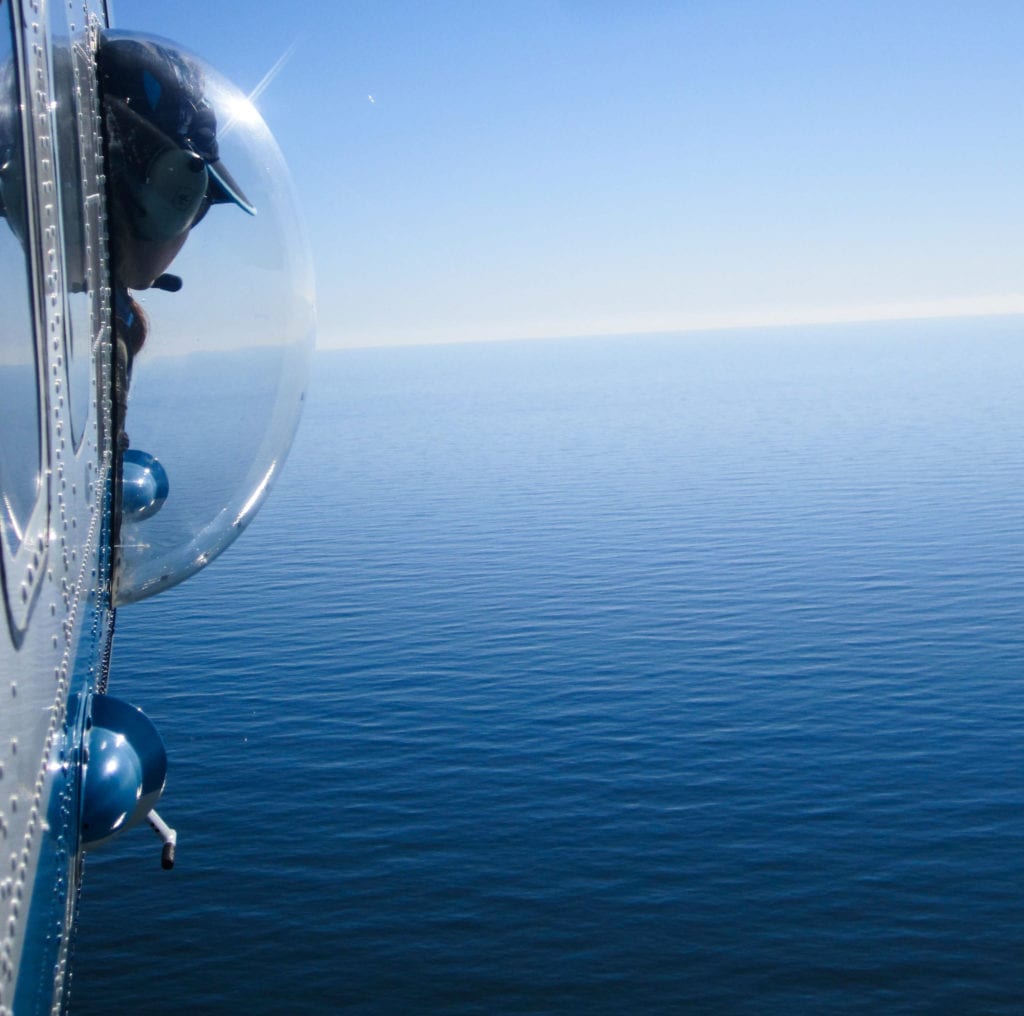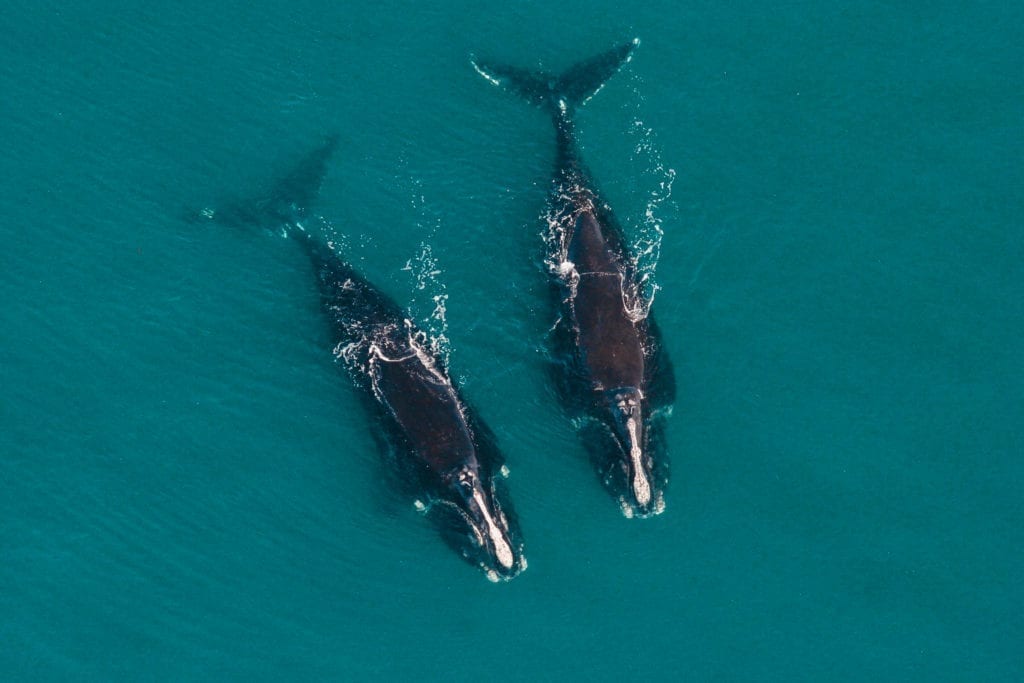With only an estimated 360 North Atlantic right whales remaining, research and conservation programs are key to saving this critically endangered species. CMA Research Institute scientists have collected more than 20 years of aerial survey data on this species during its critical calving time in the southeast. This data has led to ship speed reduction and expanded habitat protection, halting whale mortality in the southeast. During our daily flights each winter, our scientists warn mariners from North Carolina down to Florida about whale locations to avoid vessel strikes and alert rescuers about whales entangled in fishing gear, two leading causes of mortality for this species.

North Atlantic Right Whales
The North Atlantic right whale, Eubalaena glacialis, is one of the most endangered marine mammals in the ocean. An estimated 350 whales remain throughout their North Atlantic Ocean range. The population is federally protected under the Endangered Species Act and Marine Mammal Protection Act.
Right whales were once prized by early whalers due to their slow swimming speeds, coastal habitat use, and thick blubber. They were deemed the “right” whale to hunt, thus the name. Less than a century ago, these whales were nearly hunted into extinction.
Today, this species is facing a series of new threats from human-related activities, including collisions with vessels and entanglement in fishing gear. Changes in the abundance and distribution of their food, likely a result of global climate change, may also be affecting their health and reproduction. Each fall, a portion of the species migrates down the Eastern seaboard, spending the following winter calving or nursing their young. Over the ensuing months, these whales share their coastal habitat with heavy volumes of cargo and recreational vessels, along with fisherman, lobsterman, and small-scale fishing operations.

At the request of the National Oceanographic and Atmospheric Administration (NOAA), our researchers have flown daily aerial surveys for the past decade to provide real-time reports of right whale locations to mariners operating commercial, military, and other vessels in Florida and Georgia’s port areas – the only known calving areas for this species. These reports reduce the likelihood of collisions with right whales, and enable our researchers to search for signs of entanglement and aid in recovery efforts when necessary.

With funding from Georgia Department of Natural Resources, NOAA, and the U.S. Army Corps of Engineers, our project works to:
- monitor North Atlantic right whales during their calving season through aerial surveys designed to prevent vessel collisions and document reproductive rates;
- provide scientific data to marine decision makers on conserving the species and their habitat;
- aid rescue and recovery efforts to disentangle whales from fishing gear;
- locate carcasses for recovery and necropsies, and
- assist with locating whales for genetic sampling.
Additionally, our researchers have been active on the management and conservation side of the issue through the NOAA Atlantic Scientific Review Group and past participation in the NOAA Large Whale Take Reduction Team.
Monitoring data from our surveys have been used by management agencies to help in determining appropriate boundaries of critical habitats, speed zones, and other protection measures.
Our right whale staff are world-class scientists from across the United States who have been involved in research and conservation activities related to the species for more than 20 years.

Impacts of the Right Whale Conservation Program
Long term conservation solutions require both short- and long-term strategies and monitoring. From December through April, our expert team monitors the right whale population. Here are a few of the impacts:
Short-term Impact
- Daily aerial monitoring enables CMA researchers to notify mariners in real-time to the presence of right whales
- Daily aerial monitoring enables CMA researchers to notify first-responders in real time of an injured whale or one entangled in fishing gear.
Help Support The North Atlantic Right Whale
Long Term
- Our scientists are providing multi-year, solid datasets with sample sizes large enough for managers to make effective management decisions. This is particularly important when trying to conserve an endangered species.
- After a decade of monitoring along the northern Georgia and South Carolina coasts, survey results were used to support the proposal for a critical habitat expansion in those regions.
- Our years of surveys along the Georgia and South Carolina coasts were used to help define the boundary for seasonal speed restrictions on large vessels in the southeast and mid-Atlantic regions.
- Working together with the U.S. Army Corps of Engineers, our data helps environmental engineers avoid critical habitat areas when planning dredging projects.
Right Whale Facts
- How to tell it’s a right whale:
- • Broad, flat back with no dorsal fin. • Paddle shaped flippers. • White “callosity” patterns on head and chin, used to identify individuals. • Mainly black with occasional white patches on belly. • V-shaped blow.
- Three Species
- • North Atlantic right whale: North Atlantic Ocean. • North Pacific right whale: North Pacific Ocean. • Southern right whale: southern hemisphere.
- Weight
- Up to seventy tons (equals about ten elephants).
- Length
- Up to 55 feet long (about the length of a school bus).
- Newborn calves
- Two tons, 15 feet in length.
- Number remaining in population
- Approximately 400
- Status
- One of the most endangered marine animals in the ocean.
- Primary Threats
- Human activity including vessel strike and fishing gear entanglement.
- Primary Feeding Grounds
- Northeast U.S. and Canada.
- How Do They Eat?
- Have large plates of baleen to strain their food (small marine organisms called copepods) out of the water
- Only Known Calving Ground
- Southeastern U.S.
Research conducted and photographs collected under NOAA research permits #15488 and #20556-01.
Making Waves
- 1600+ rescued sea turtles since 2010
- 2100+ Nests monitored since 2010
- 850+ Animals released since 2010
- 190K Volunteer Hours 2020-2021